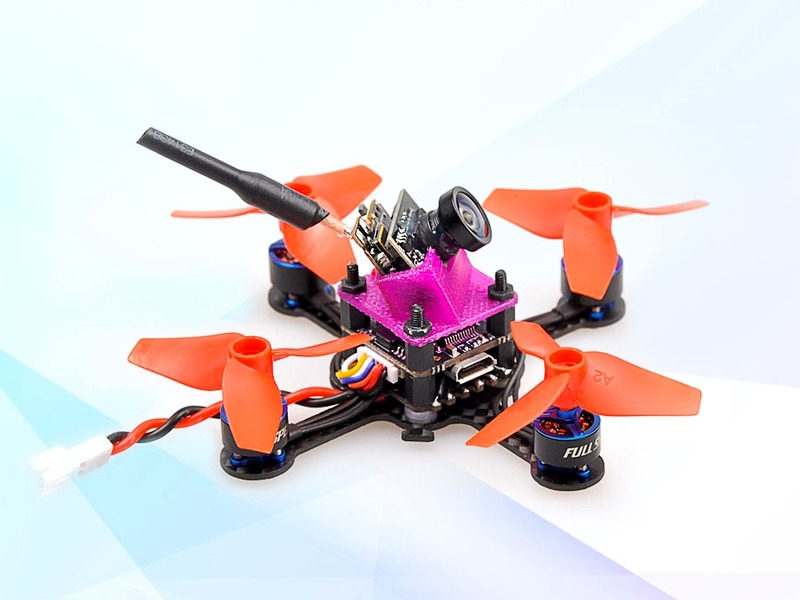How do you use FPV drone?

FPV (First Person View) drones are a type of unmanned aerial vehicle (UAV) that allow the user to experience the flight as if they were in the cockpit of the drone. FPV drones are typically used for aerial photography, videography, and racing.
To use an FPV drone, the user must first assemble the drone and attach the necessary components. This includes the frame, motors, propellers, battery, receiver, transmitter, and camera. Once the drone is assembled, the user must bind the receiver to the transmitter, which allows the user to control the drone.
Once the drone is ready to fly, the user must connect the FPV goggles to the drone. This allows the user to see what the drone’s camera is seeing in real time. The user can then use the transmitter to control the drone’s movements.
When flying an FPV drone, the user must be aware of their surroundings and the laws and regulations that apply to the area they are flying in. The user must also be aware of the drone’s battery life and the amount of time they can fly the drone before it needs to be recharged.
When using an FPV drone for aerial photography or videography, the user must be aware of the camera settings and how to adjust them to get the best results. The user must also be aware of the drone’s altitude and how to adjust it to get the best shots.
When using an FPV drone for racing, the user must be aware of the rules and regulations of the race and the course layout. The user must also be aware of the other racers and how to avoid collisions.
Using an FPV drone can be a fun and exciting experience. However, it is important to remember to be safe and follow the laws and regulations that apply to the area you are flying in. It is also important to be aware of the drone’s battery life and the amount of time you can fly the drone before it needs to be recharged. Finally, it is important to be aware of the camera settings and how to adjust them to get the best results.
Comments / Question
2. Follow all local laws and regulations regarding drone use.
3. Make sure you have the appropriate permissions before flying.
4. Check the weather conditions before flying.
5. Make sure your drone is in good condition and properly calibrated.
6. Use a spotter to help you keep an eye on your drone.
7. Use a pre-flight checklist to ensure everything is ready to go.
8. Fly in open areas away from people, buildings, and other obstacles.
9. Avoid flying near airports, military bases, and other restricted areas.
10. Respect the privacy of others and never fly over private property.
2. Connect the battery: Connect the battery to your drone following the instructions. Make sure the battery is properly secured and locked into place.
3. Balance and calibrate the propellers: Balance and calibrate the propellers to ensure they spin evenly and efficiently.
4. Install and configure the FPV gear: Install the FPV gear on your drone, including the camera, receiver, and any other components. Connect the FPV gear to your radio controller and configure it correctly.
5. Connect the FPV transmitter and receiver: Connect the FPV transmitter and receiver to your radio controller and drone, following the instructions.
6. Program the flight controller: Program the flight controller to ensure it has the correct settings.
7. Do a pre-flight check: Do a pre-flight check to make sure all components are working correctly and there are no issues.
8. Take off: When you’re ready to fly, take off and enjoy your FPV drone experience!
2. Check the weather conditions before flying and avoid flying in strong winds or rain.
3. Make sure your drone is in good condition and all parts are functioning properly.
4. Always keep your drone in sight and maintain a safe distance from other aircraft.
5. Familiarize yourself with the local laws and regulations regarding drone use.
6. Wear protective gear such as goggles or a headset to protect your eyes from the sun and wind.
7. Make sure your drone is equipped with a failsafe system that will return it to you in case of a signal loss.
8. Keep your drone away from power lines and other hazardous areas.
9. Avoid flying over crowds or populated areas.
10. Make sure your drone is registered with the FAA if it weighs more than 0.55 lbs.
2. Reducing the risk of damage: FPV drones can help minimize the risk of damage when flown in close quarters by allowing the pilot to have better visibility of their environment. With this increased visual awareness, pilots are less likely to crash into obstacles or people.
3. Enhanced flexibility: FPV drones allow pilots to fly with greater flexibility, as they are able to pivot and maneuver as needed. This can be particularly helpful in inspecting hard-to-reach areas or performing complex aerobatics.
4. More immersive experience: FPV drones provide a more immersive and enjoyable experience for pilots. This can help pilots to stay more focused and engaged in the task at hand, making for more accurate and quicker results.
2. BNF (Bind-N-Fly) FPV Drones: These are FPV drones that come without a transmitter, so you'll need to purchase one separately to use with the drone.
3. DIY FPV Drones: These are FPV drones that require you to build the drone from components. This is a great option if you want to customize the drone and make it your own.
4. Racing FPV Drones: These are FPV drones designed for racing and feature powerful motors, light weight frames, and high-end electronics such as flight controllers and FPV cameras.
5. Mini FPV Drones: These are small FPV drones that are often used for indoors or outdoor racing. They usually feature very small frames and powerful motors.

